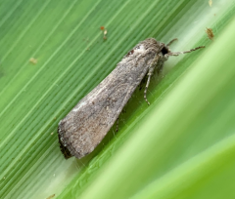Victorian agronomists and growers should be vigilant in crop surveillance for Fall armyworm (FAW), following the impacts the pest is having on crops in Queensland.
Fall armyworm has rapidly spread across Australia after being found in Queensland in January 2020 and is now established in New South Wales, Northern Territory, Western Australia and parts of Victoria.
Agriculture Victoria Plant Pests and Diseases Manager Chris Pittock said a collaborative effort between government, industry and the community is crucial to effectively manage pests such as Fall armyworm.
'If agronomists and farmers find Fall armyworm on their property, they should seek professional advice for treatment and management.
'Given this pest is established in some parts of the state – we have adapted our practices to manage it. We have been able to watch what has happened in the northern states and learn from their experiences.'
'Detections of concern to us would be if the pest is found outside of central Victoria near the Murray River, and some parts of Gippsland.'
Agriculture Victoria has been leading the State response for the National Fall armyworm project, which is coordinated by Queensland Department of Agriculture and Fisheries (QDAF).
The project aims to support Australian growers with the latest information and tools to manage FAW.
Early detection of FAW is important to ensure producers are making decisions in observance with best practice methods of control, and to reduce the likelihood of resistance occurring in the pest.
For the most up-to-date information on how to identify and prevent FAW, check out the Fall Armyworm Beatsheet.
Agriculture Victoria is monitoring the distribution of Fall armyworm across Victoria. You can report a sighting by contacting the Customer Contact Centre on 136 186 or by completing the Online Reporting Form.
About Fall armyworms
- Fall armyworm has adapted to warm tropical and sub-tropical areas in northern Australia and can migrate rapidly and be spread by storm events.
- Fall armyworm feed on maize, sweet corn, sorghum and sugarcane, and experiences in Queensland have also shown a high preference for feeding on corn, even though wheat, millet and sunflowers were nearby.
- Adult moths are 32 to 40mm in length, wing tip to wing tip, with a brown or grey forewing and a white hind wing. Male fall armyworms have more patterns and a distinct white spot on each of their forewings.
- Eggs are pale yellow in colour and clustered together in a mass, which often contain 100 – 200 eggs per mass. Egg masses are usually attached to foliage with a layer of mould/silk-like furry substance.
- Newly hatched larvae are light coloured with a larger darker head and then develop white stripes lengthwise as the larvae darken and grow to about 34mm in length.


For the latest information on FAW from across Australia:






